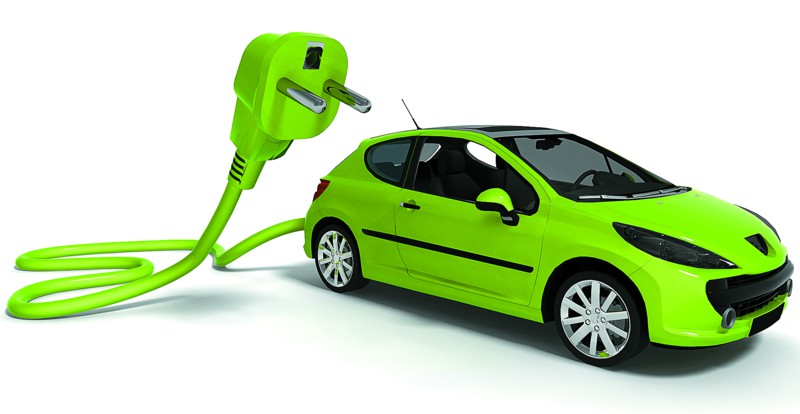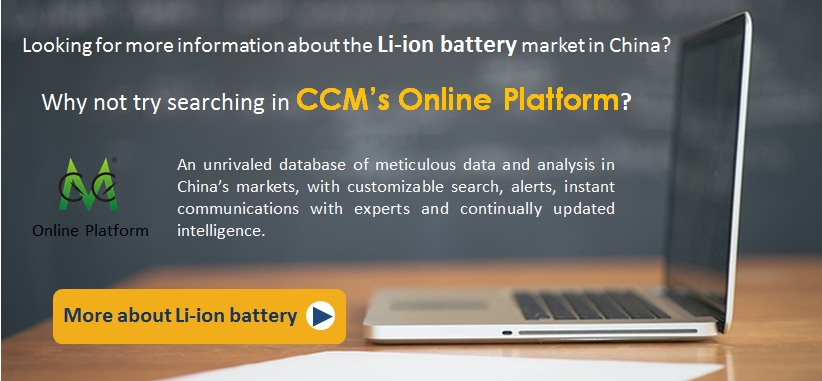On 5 Aug., 2016, the Ministry of Industry
and Information Technology of the People’s Republic of China (MIIT) issued the Light
Industry Development Plan (2016-2020) (Plan) to implement the 13TH Five-Year Plan for National
Economic and Social Development and the Made in China 2025.

Source: Baidu
As the Plan puts it, 3 major trends are
noted for Li-ion battery business.
1. High-performance Li-ion battery materials
Cathode materials, anode materials, electrolyte, and separator are the 4 key
materials of Li-ion battery. Their performance improvement is of great
significance to the energy density, specific capacity and safety of Li-ion
battery.
Specifically, the premium-marketed cathode materials segment, still lagging
behind the international level, and electrolyte technology, in wait of
improvement, are the dominant bottlenecks to domestic Li-ion battery material
industry.
- Cathode materials (40% of the total costs for Li-ion battery): In the context
that the requirements on the driving range of alternative energy vehicle (AEV)
are increasing, cathode materials, which exert decisive influence on the energy
density of Li-ion battery, is becoming nickelic-oriented, such as the
development of lithium nickel cobalt aluminate (NCA).
However, domestic NCA business is still at a starting stage, mainly
focusing on laboratory scale experimentation and pilot scale experimentation –
projects at the former stage outnumber the latter.
- Electrolyte: The competitive edge of this material hinges on its
additives-centered formula. In addition, manufacturers are expected to
collaborate with customers to develop products based on their demands, and to
find access to supplying to top Li-ion battery manufacturers at home and abroad
by means of strong technology innovation and excellent customer service.

2. Production line automation
Regarding the manufacturing, domestic Li-ion battery industry has been for a
long period faced with low level of automation, low productivity, low yield
percentage of quality products, and low information exchange efficiency,
which have blocked the development of premium-marketed Li-ion
battery.
In order to advance the transition from “a big country for light industry” to
“a powerful country for light industry” and accelerate the realization of intelligent manufacturing by 2025, the MIIT mentioned in the Plan that is a must
to develop equipment for manufacturing wide-range and high-speed battery pole
piece, equipment for battery system testing, and equipment for waste battery
sorting, dismantling and regenerating, and accelerate the domestication of
automated production lines involving button cell of high efficiency and high
precision.
3. E-bike promotion
As the AEV industry is in full swing, e-bike market is quietly emerging.
Insiders pointed out that e-bike business may return to high speed growth.
Since the bicycle industry develops towards light weight, diversification,
fashion and intelligence, e-bike may become a mainstream. In particular, e-bike
based on Li-ion battery and intelligent e-bike are both stressed in the Plan.
This article comes from China Li-ion Battery E-News 1608, CCM

About CCM:
CCM is the leading market intelligence provider for China’s
agriculture, chemicals, food & ingredients and life science markets. Founded in 2001, CCM offers a
range of data and content solutions, from price and trade data to industry
newsletters and customized market research reports. Our clients include Monsanto,
DuPont, Shell, Bayer, and Syngenta. CCM is a brand of Kcomber Inc.
For more information about CCM, please visit www.cnchemicals.com or get in touch with us
directly by emailing econtact@cnchemicals.com or calling
+86-20-37616606.
Tag: Li-ion battery